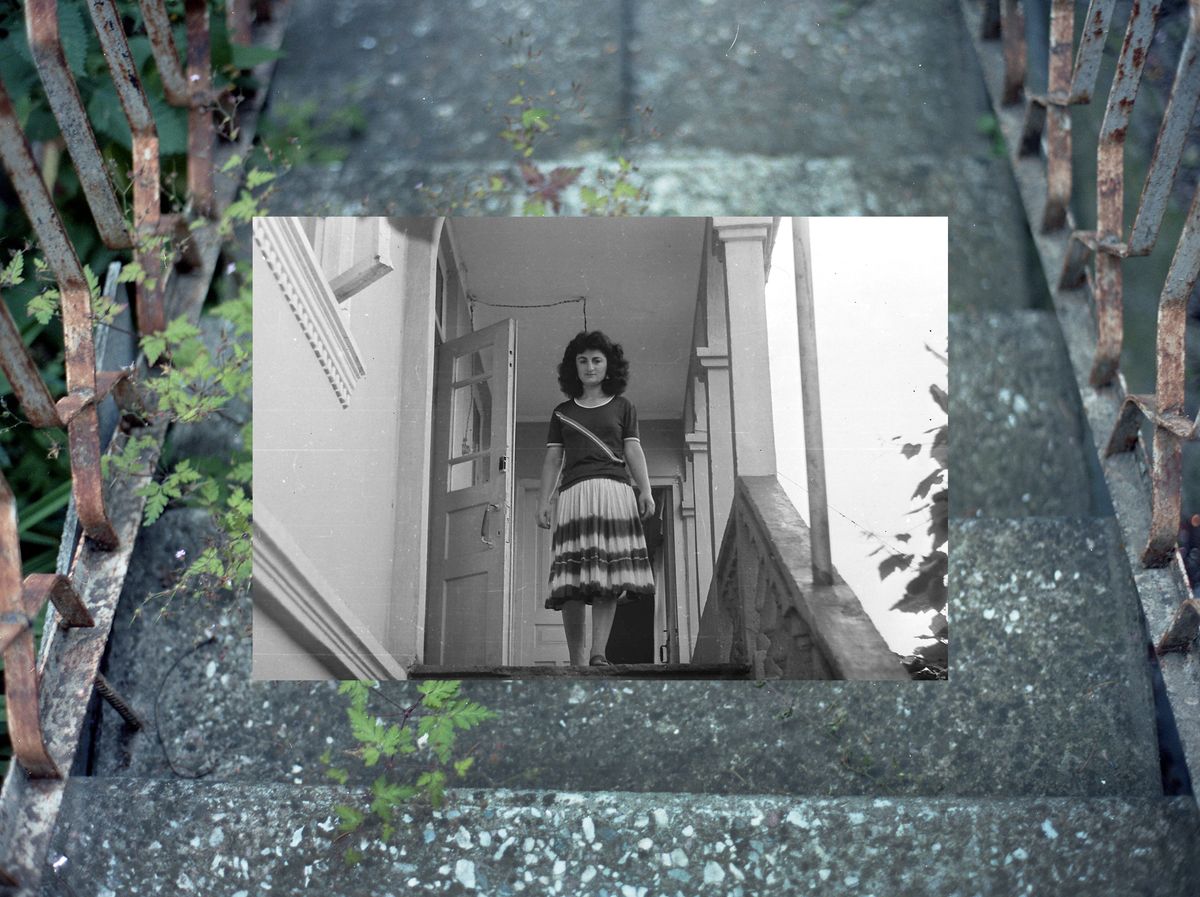On 13 April, the president of Georgia, Salome Zourabichvili, threw a party in the presidential palace for the artists, dealers, curators, journos and VIPs at the Tbilisi art fair, TAF24 (11-14 April).
So far as I know, it is the only art fair in the world to have enjoyed such an honour, proving that it is no ordinary commercial event, but something more, another building block in the modern identity of Georgia, which the president wants to reinforce.
As she said at the opening, “There is no freedom without culture and no culture without freedom”. Later, privately, she went on to say: “Without culture, our country would have no identity”. At the party, she awarded Kaha Gvelesiani, the fair’s founder and principal backer, and Eric Schlosser, its artistic director, the Medal of Honour. Then, a male choir sang to us, beginning in the moving, ancient polyphony of Georgian music, but with the song merging into Beethoven’s Ode to Joy, the European Union’s anthem.
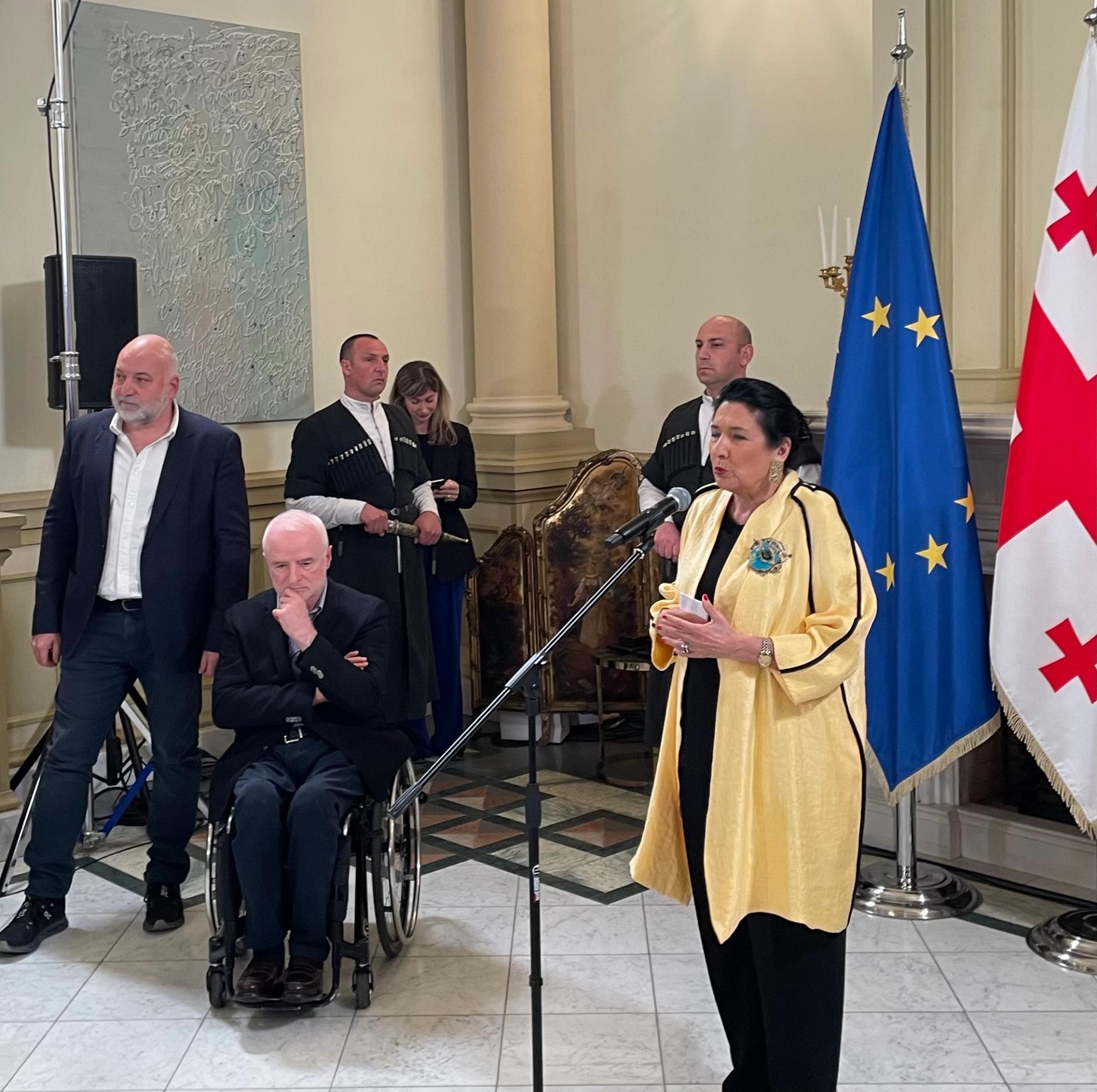
Erich Schlosser, Kaha Kvelesiani and the president of Georgia with her Caucasian honour guard Photo: Anna Somers Cocks
In case you need reminding, Georgia (population 3.7 million) is at the east end of the Black Sea, with Russia to the north, Turkey and Armenia to the south, and Azerbaijan to the south-east. Its patron saint is St George, its flag the cross of St George with extra crosses because it is proud of being the eastern-most frontier of European Christendom, the first territory beyond the Middle East to convert to Christianity, 1,700 years ago.
Its national myths are strong and frequently invoked because it has had to struggle to keep its identity since Russia incorporated it in 1801. Independent since 1991, it has been accepted as a candidate to join the EU, which allows it to fly the gold stars on a blue ground flag, which you see all over town. There is tension, however, between a government that is cosying up to Russia and the Georgian people, who believe that their future and freedom lies with Europe. The song we heard was therefore a thinly veiled political statement.
This was the backdrop to the 2024 art fair, on whose advisory board I have sat since the first edition in 2018. I come back to Tbilisi again and again because, beyond the sheer pleasure of being in Georgia—wine, mountains, monasteries and song—I have found every edition a fascinating experience in mind travel.
“We need emotion in art, but too many artists are emotionally dead”
Jeans are universal and Dunkin’ Donuts have come to Georgia. But that does not mean that Georgians think the same as Americans. What does the art reveal about people’s sorrows and passions and how does the artist turn it into something worth looking at? So much art is dull because it is labouring to invent meaning for itself. Artists are forced to keep up the churn without time to think or feel, so we see too much art about safely fashionable clichés such as questions of gender that earn easy nods of approval. Worthwhile art should show you something you did not know or have not felt before. As Eric Schlosser said to me, “My children see democracy in danger, the use of nuclear arms being threatened. They want to feel something and for this we need artists to communicate emotion. Many artists are emotionally dead and the art fairs have taken on Duchamp’s role of declaring what is art, but this is pissing on art.”
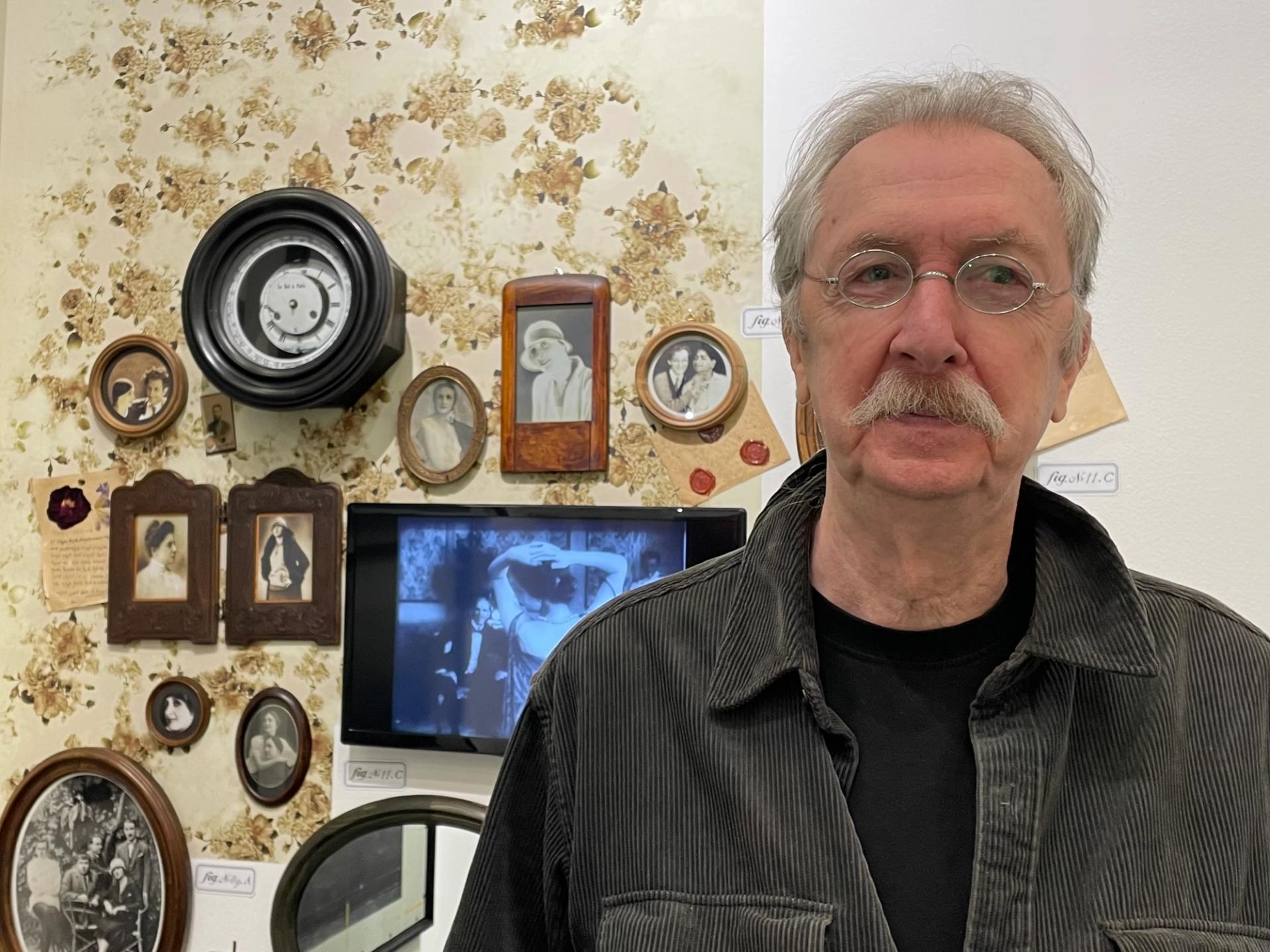
Levan Mekhuzla and souvenirs of his beautiful mother—and Stalinism Photo: Anna Somers Cocks
I therefore decided to ask four artists at the fair to tell me about what moved them to create. Levan Mekhuzla, 79, an architect by training, had a mother of extraordinary beauty, Tamar Bolkvadze, who was a silent movie star. His work is an assemblage of portrait photographs around a clip of her dancing circa 1920 in front of elegant men in evening dress. At the time, the lingua franca of her social class would have been French and, given the nostalgic nature of Mekhuzla’s art, it seemed appropriate that we ended up speaking French together.
He described the dark reality of their lives. His mother’s first husband died in 1938 during the Stalinist purges (Stalin was a Georgian but that did stop him from killing about 15,000 of his co-nationals) and he grew up with with a terror that he would be abandoned because his parents lived with their suitcases packed, ready for the 4am knock on the door. Was his mother happy, I asked. She was, he replied, but she was always afraid. His work is about history, dread, souvenirs of normalcy in a life that was anything but normal, a profound nostalgia for a glorious moment that he never knew himself, but that had been his mother’s.

Nino Kvrivishvili and her art, a by-blow of the collapse of the USSR Photo: Anna Somers Cocks
The paintings and textile of Nino Kvrivishvili, 39, shown by the Hamburg gallery Melike Bilir, are less tragic but still a poignant witness to a small aspect of the epochal change that was the collapse of communism. Kvrivishvili studied textile design at the Tbilisi Academy of Art and her works look rather like the early 20th-century avant-garde but in fact they depict stylised bits of textile machinery, bobbins and shuttles. With the dissolution of the Soviet Union in 1991, satellite countries like Georgia were cut loose and the artificial economy constructed under communism suddenly collapsed. The whole of the Georgian textile industry and its 20,000 employees, who had worked solely for the USSR, became redundant from one day to the next. Some subsided into abject poverty, others went to Russia to find new livelihoods, leaving their most precious belongings in suitcases with friends for when they would return, but they never did. Kvrivishvili’s Russian grandmother had been a weaver and she stored some of these suitcases, out of whose contents Kvirivishvili recently made an exhibition at the Tbilisi State Silk Museum.

Gvantsa Jishkariani in front of her wall hanging Photo: Anna Somers Cocks
Textiles emerged, coincidentally, Schlosser says, as something of a theme at this year’s fair. Felt had traditionally been used in the Caucasus and Central Asia to line tents, for boots and for heavy clothing. It was also exported to the USSR, and there is a movement now to revive its use, so Gvantsa Jishkariani, 33, has made a collage-type wall hanging of herself and her cats among plants.
She is the dynamic, talkative co-owner of a gallery called Why Not, which has shown at NADA fair in New York and the Abu Dhabi Art Fair, and she also has a gallery with a big, illuminated window in a Tbilisi underpass “to get people used to the idea that art is for everyone”, she says. She trained as an artist at the Academy of Fine Arts but is contemptuous of its traditional approach—the only place where things were really happening was the photography department, she says—and she takes a more conceptual approach to art than the previous two artists. “I grew up with public art such as huge mosaics and hideous machine-made tapestries, so I make things out of them or parody them”, she says.
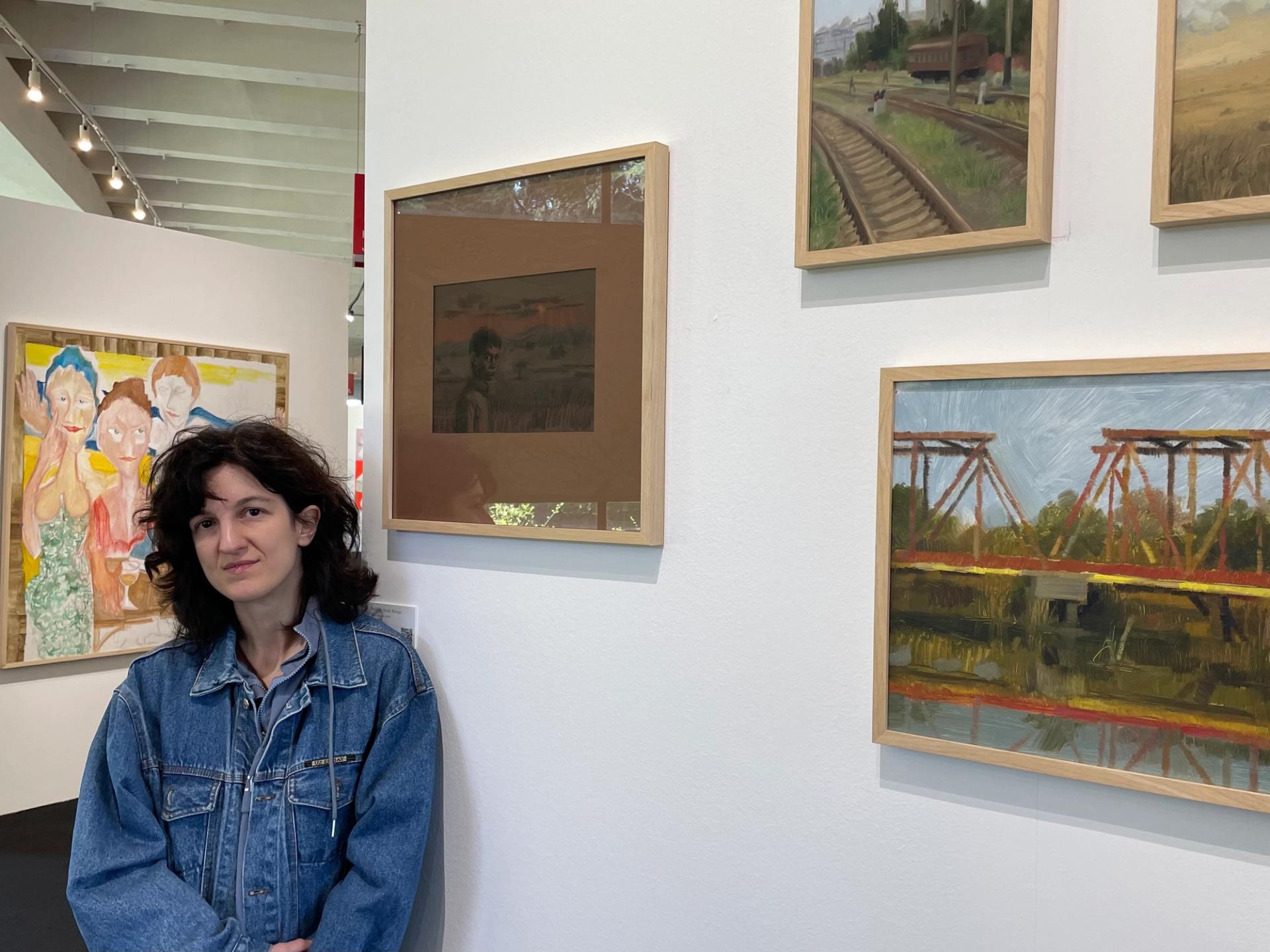
Anouk Belugar, a radical traditionalist Photo: Anna Somers Cocks
Anouk Belugar, 38, on the other hand, also studied at the Academy of Fine Arts, and she esteems it enough to continue going there to practise her traditional oil-painting. Is this straight Socialist Realism revived or something conceptually new? In either case, it is the work of a contrarian. Instead of shaking the dust of communism from her feet like everyone else, she is going back to before the USSR and writes for a Marxist platform about current events in counter-hegemony, a challenge to the prevailing ideas. She is small and strong and works as a builder but paints en plein air and walks around until she sees something that interests her. She does not have a gallery and her small pictures were in the section of the fair where the works are chosen by Schlosser: four landscapes, with two scenes painted this March that were inspired by Land of Sad Oranges, a novel by the Palestinian writer Ghassan Kanafani, who was killed with a car bomb by the Israeli secret police in 1972.
Photography is strong in the region and popular with the public as it is easily understood. This year, TAF24 joined forces with International Women in Photography (IWPA), run by the Paris-based Spaniard Arantza Aramburu Hamel, to organise the first Photo Challenge for Eastern Partnership countries (Armenia, Azerbaijan, Belarus, Georgia, Moldova, Ukraine) with the main aim of promoting women storytellers from the region and “providing insight into their narratives”. The winners were on display, first prize going to a photographer who lost access to the country of her birth in 2008 when the Russians recognised the Georgian region of Abkhazia as an independent territory and now keep hinting that they might take it over completely, as with the Donbas in Ukraine. Leli Panchvidze, who is in her 60s, took her first and last photographs of Abkhazia in 1983 with a camera given to her by her father. She writes that she is constantly searching for places that remind her of the carefree summers she spent there with her grandmother and mother's relatives. When she finds one, she photographs it and puts it together with the old black-and-white images in a way that allows her to return in her imagination to her loved ones in what was once their home.
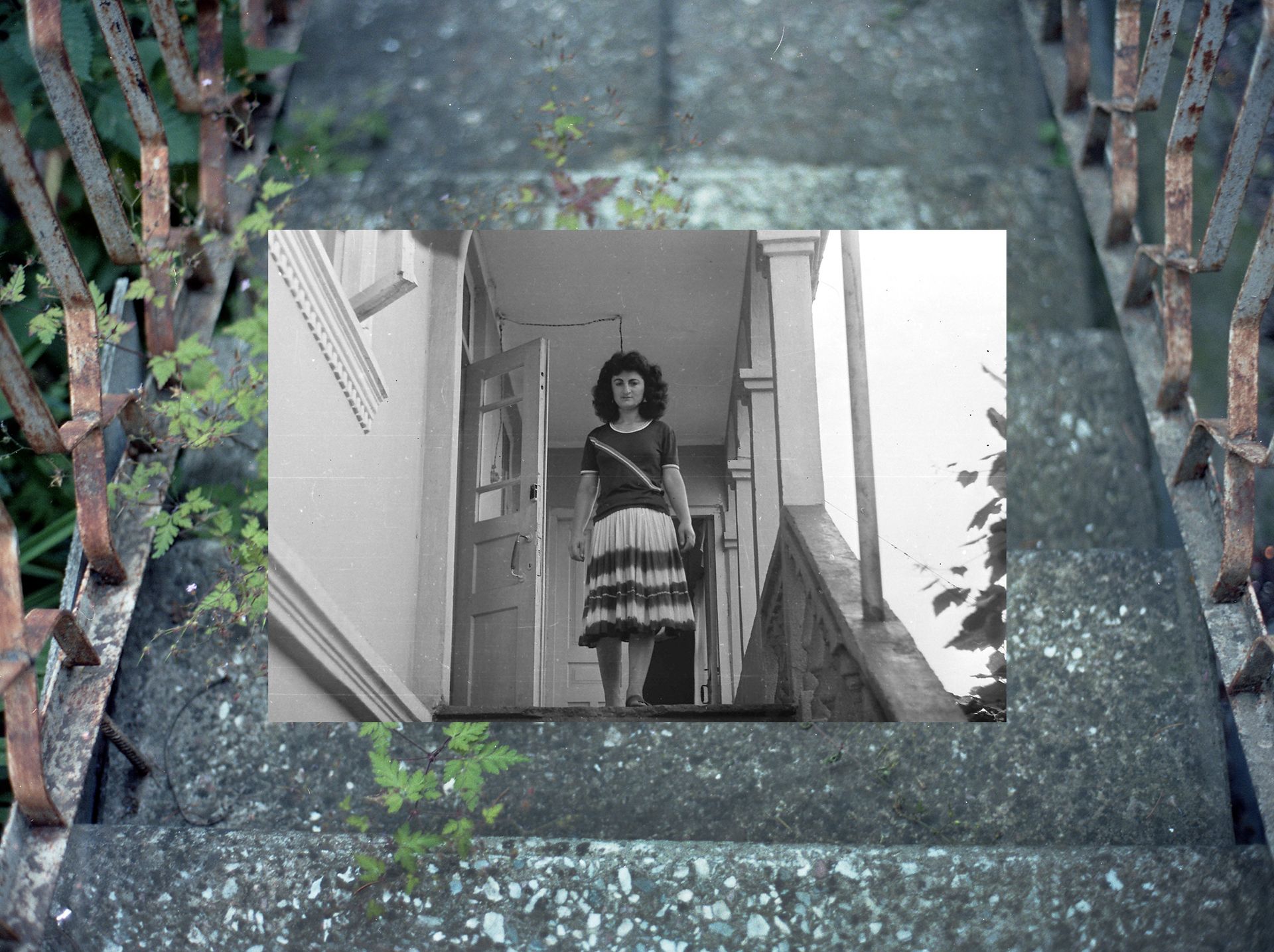
Leli Panchvidze, a modern memory superimposed on an image of Abkhazia taken in 1983 before the Russians isolated it © the artist
These four artists, almost a random selection, give us some of the fine grain to fill in the broad-brush myths and narratives of the country, the emotions that move and motivate them. Why should we care, you may ask, what people are feeling in countries far away. One answer is that you never know when one of them—Ukraine, for example— might not become relevant to our lives, or, to put it in a less utilitarian way, no man is an island, as John Donne famously said.
We also need to work on making our mental networks more complex and critical to fight off the polarising crudeness of populist politics and the self-reinforcing information fed to us by algorithms.
Physically, the art scene in Tbilisi reminds me of Berlin after the fall of the Wall, when the crumbling buildings of the eastern zone filled up with artists putting on spontaneous shows until it got gentrified and too expensive for them. Old Tbilisi is now full of galleries. The art scene has developed rapidly in the six years since the art fair gave a public stage to the artists, who are numerous because of the training in art established under the Soviet system. Good art can be bought at the fair for under €5,000 and at that price you can go for what pleases you rather than having to speculate on its resale value. This may, in any case, take off because, as the leading dealer, Thaddaeus Ropac, said to me, he’s always interested in artists that come from countries that have academies of fine arts, by which he means those in the former Eastern bloc countries that still teach technique. After all, he found Adrian Ghenie, one of the today’s most bankable artists, in Cluj-Napoca, the capital of Transylvania.
All in all, it is encouraging that the Bank of Georgia, which guarantees the economic worth of the country, and the country’s president have both given their support to this small but fascinating fair, which has already proved that it can add yeast to the cultural mixture of its country.


